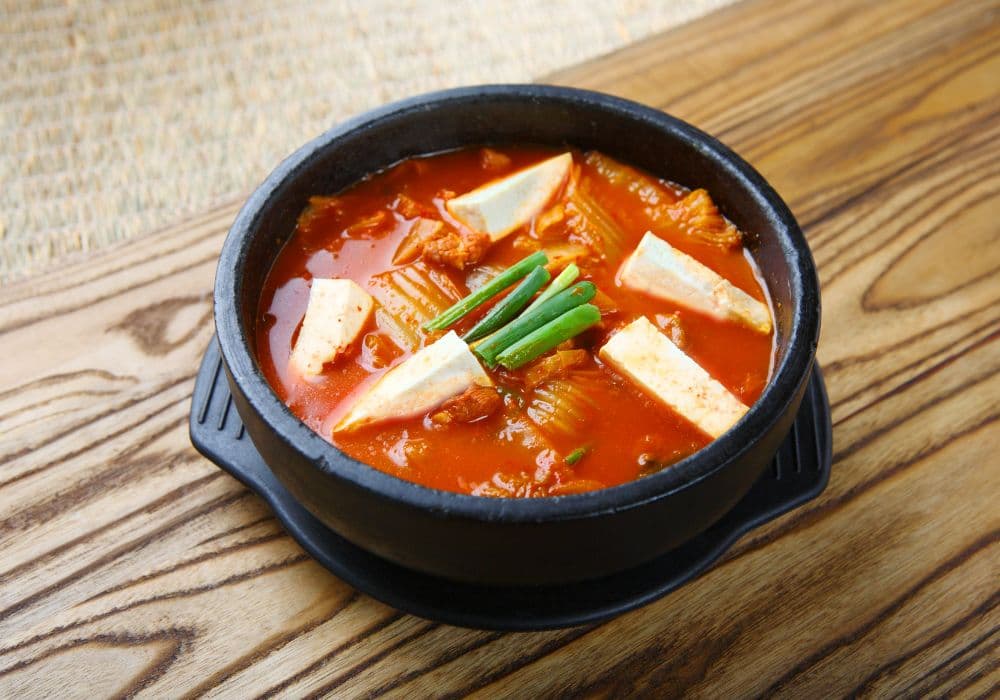Kimchi is a traditional Korean dish made from fermented cabbage and a variety of seasonings, such as chili pepper, garlic, ginger, and salted seafood. The fermentation process gives kimchi its distinctive tangy and spicy flavors. It is often enjoyed as a side dish and can be incorporated into various dishes, including stews, fried rice, and noodles.
What Is Kimchi?
Crafting Kimchi: How to Make Your Own
Making your own kimchi allows you to customize the flavors and ingredients to suit your preferences. Follow this step-by-step guide to create your very own homemade kimchi:
Step 1: Prepare the Cabbage
Start by quartering a head of napa cabbage and sprinkling salt between the leaves. Let it sit for a few hours to draw out excess moisture.
Step 2: Create the Seasoning Paste
In a blender, combine garlic, ginger, chili pepper flakes, fish sauce, and a touch of sugar. Blend until you achieve a smooth and well-combined paste.
Step 3: Massage the Cabbage
Thoroughly rinse the cabbage to remove the excess salt. Using gloves, massage the seasoning paste into each leaf, making sure it is evenly distributed.
Step 4: Fermentation and Storage
Transfer the seasoned cabbage to a clean container, ensuring to press it down firmly to remove air bubbles. Cover the container and let it ferment at room temperature for a day or two before refrigerating.
Kimchi's Nutritional Prowess: Unearthing the Benefits
Kimchi not only delights the taste buds but also offers a wide array of health benefits. Here are some of the advantages of including kimchi in your diet:
- Probiotics: As a fermented food, kimchi is teeming with beneficial bacteria that promote gut health, aid digestion, and strengthen the immune system.
- Low-Calorie: Kimchi is low in calories but high in fiber, which adds bulk to your meals and can help with weight management.
- Rich in Antioxidants: The vibrant colors of kimchi come from the various vegetables used, which are packed with antioxidants that fight inflammation and protect against chronic diseases.
- Vitamin-Rich: Kimchi is a good source of vitamins A, C, and K, as well as minerals like calcium and iron.
Kimchi's Role in a Balanced Diet: Is It Good for You?
Incorporating kimchi into a health-conscious lifestyle can be beneficial. However, like any food, it is essential to consume it in moderation and as part of a balanced diet. Here are some tips for incorporating kimchi into your meals:
- Diverse Flavors: Use kimchi as a flavorful ingredient in stir-fries, soups, and salads to enhance taste without relying on unhealthy additives.
- Accompaniment: Enjoy kimchi as a side dish alongside whole grains, lean proteins, and other vegetables to create a well-rounded meal.
- Variety Matters: While cabbage kimchi is the most common, explore other types of kimchi, such as radish, cucumber, or water kimchi, to introduce variety to your diet.
Deconstructing Kimchi: What Are Its Ingredients?
The ingredients used in kimchi vary depending on regional and personal preferences. While cabbage remains the star ingredient, other common additions include:
- Chili Pepper Flakes: Adds the characteristic spiciness to kimchi.
- Garlic: Enhances the flavor and provides potential health benefits, such as reducing cholesterol levels.
- Ginger: Adds a subtle warmth and depth of flavor.
- Fish Sauce or Salted Seafood: Contributes to the umami taste and aids in the fermentation process.
- Vegetables: Alongside cabbage, popular additions include carrots, radishes, and scallions.
By experimenting with different combinations of these ingredients, you can create a kimchi that suits your taste preferences.





